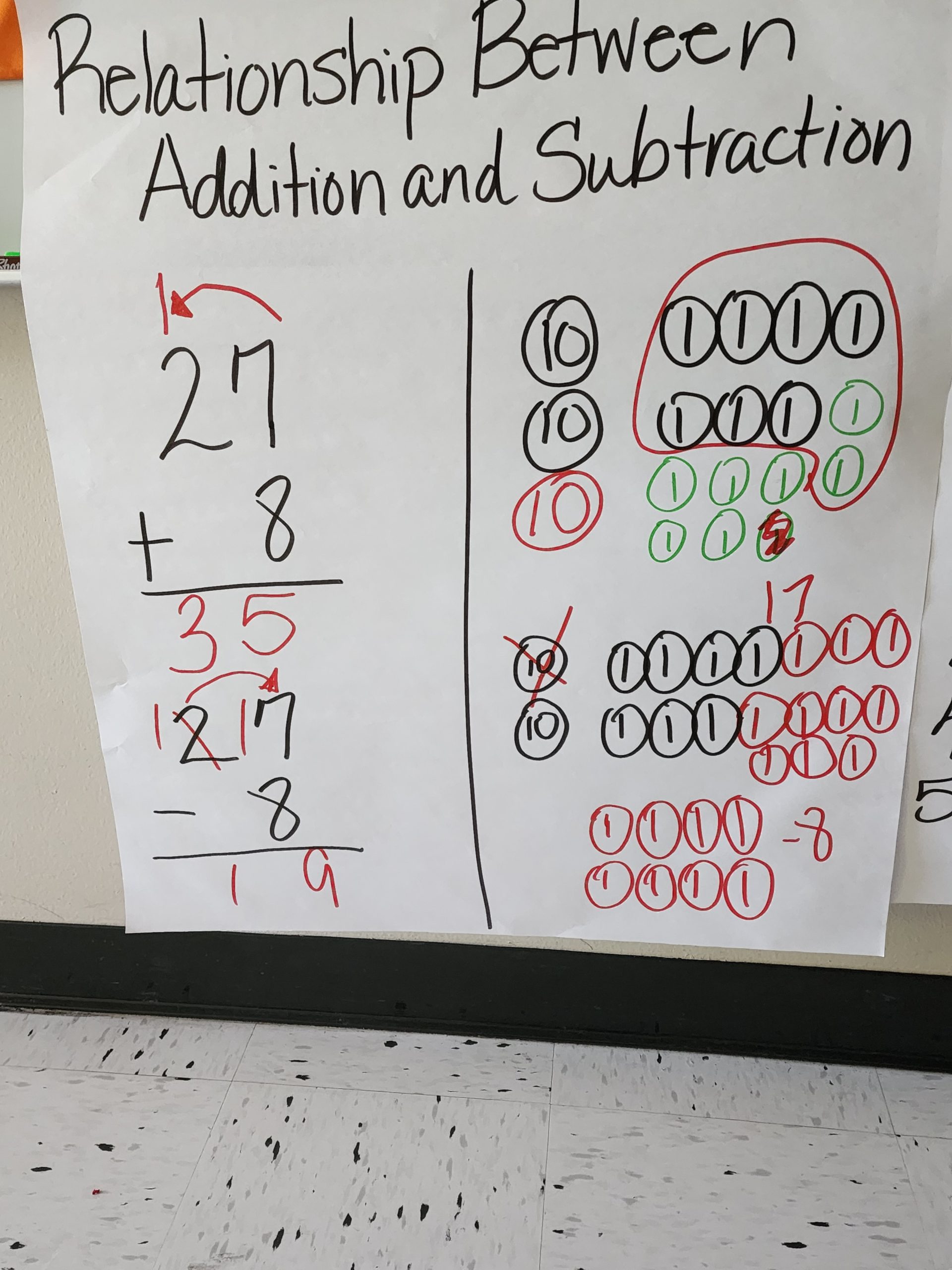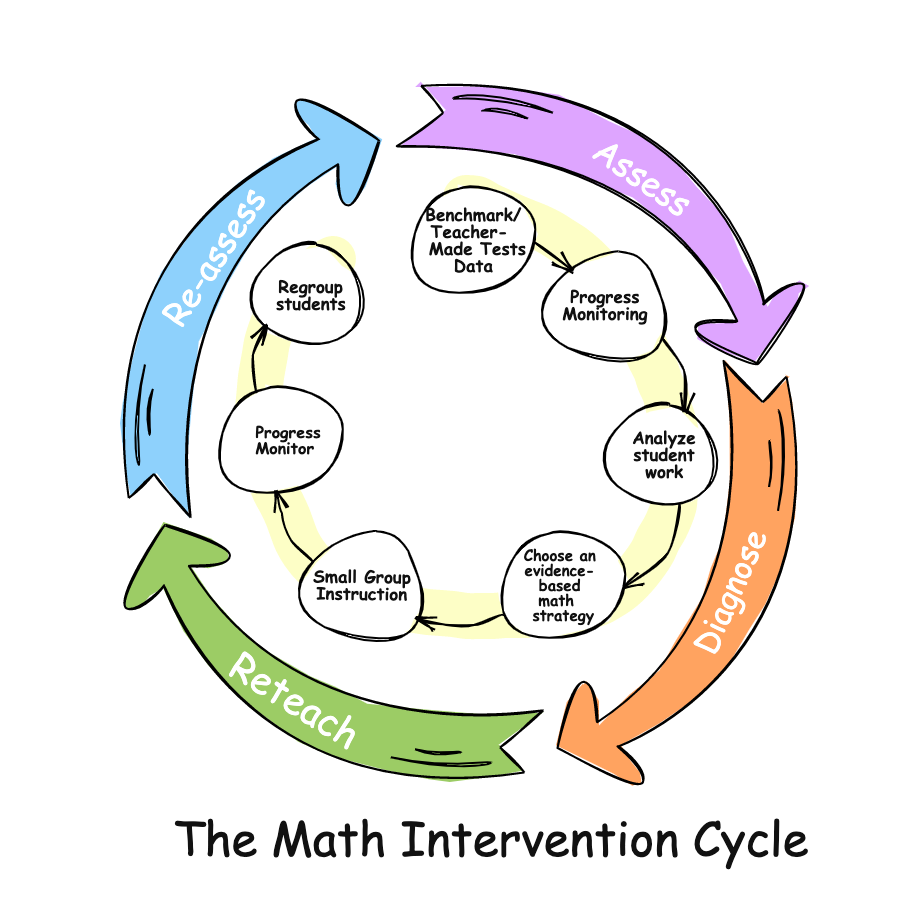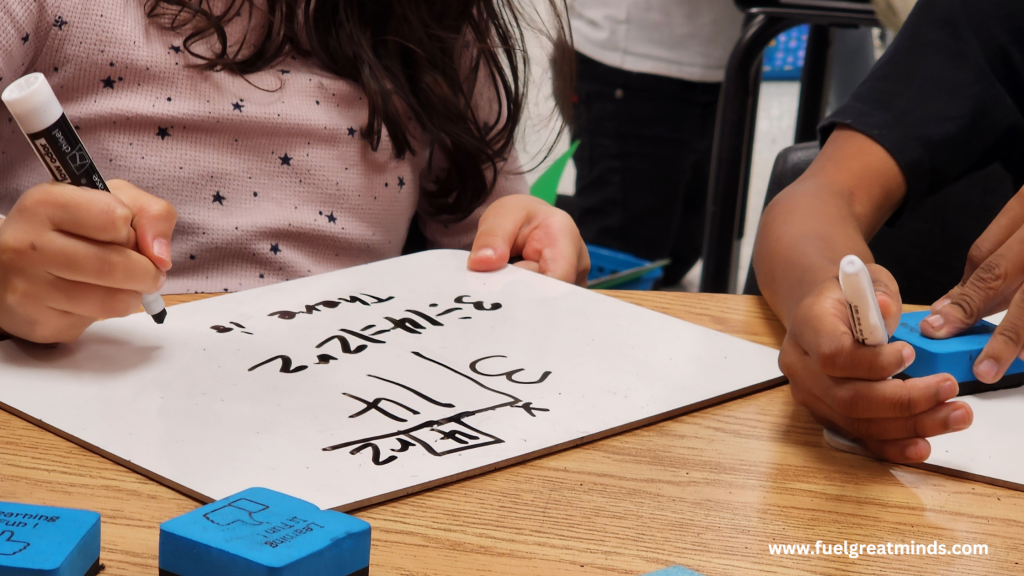When the bell rang, I watched as five of my students gathered their things and ambled, seemingly defeated, out of my classroom. It wasn’t the first time I’d seen this: students hitting a wall despite all the math interventions I had thrown their way. I remember feeling like I was failing them, and it was clear that my interventions weren’t the magical fix I’d hoped they’d be.
That’s when I realized: math interventions require continuous assessment and adaptation, a concept I’ve since incorporated into my Math Intervention Cycle. Let me share some vital strategies on what to do when your interventions don’t seem to be working.
The Math Intervention Cycle
Assess: We often rely on standardized tests to gauge our students’ understanding, but these are not the best tools for intervention assessments. Instead, consider using open-ended questions to get a clearer picture of a student’s thought process. This methodological change can highlight areas where they genuinely struggle.
For instance, I worked with a third-grader struggling with subtraction. Rather than giving her another multiple-choice test, I posed an open-ended question that revealed her issues with place value—a more foundational skill she needed to master.
Diagnose: Once you’ve identified specific areas of struggle, it’s crucial to diagnose the root of the problem. Are the difficulties stemming from a lack of prerequisite skills? Are students grappling with misconceptions? Addressing these underlying issues will inform your re-teaching strategy.
I recall diagnosing a group of students who struggled with fractions. It turned out their issue was rooted in an earlier misunderstanding of division. By pinpointing this gap, I was able to tailor my reteaching plan effectively.
Reteach: Based on your diagnosis, reteach the concept, integrating techniques that cater to your students’ learning styles. Utilize manipulatives and visual aids to make abstract ideas more tangible. Remember, reteaching isn’t just repetition; it’s presenting the information in a new way.
Reassess: The final step in the Math Intervention Cycle is to reassess. This isn’t about waiting until the next standardized test but using continuous formative assessments to track progress. It provides immediate feedback and allows for quick instructional adjustments.

Understanding Math Intevention Challenges and Adjusting Plans
Interventions can be challenging, especially when you realize students lack prerequisite skills needed for higher-level concepts. This often requires you to take a step back and revisit foundational skills.
For example, a group of my students were struggling with multiplication. It wasn’t just about reteaching multiplication; they also needed a stronger grasp of number sense. By incorporating activities dedicated to number sense, students were able to catch up and eventually master multiplication.
Continuous Monitoring and Special Education Referrals
Understanding why students aren’t progressing is crucial in deciding whether special education services are needed. Regular progress monitoring can help identify if there’s a deeper issue, such as a learning disability. If repeated cycles of diagnose-reteach-reassess show stagnant progress, it’s imperative to consult with special education professionals.
I had a student who, after several math intervention cycles, showed no improvement. We moved forward with a special education referral, and it turned out he had dyscalculia. Once we had that diagnosis, we could tailor interventions to better meet his needs.
Utilizing Available Resources
Implementing effective math interventions doesn’t have to be a solitary effort. Resources and templates available through my Math Intervention Academy can offer a structured approach to developing your intervention strategies. They’re specifically designed with these challenges in mind, focusing on diagnostic tools, formative assessments, and ongoing adjustments.
Keep Adapting and Seeking Growth for Math Interventions
It’s essential to recognize that interventions are a cycle, not a one-off solution. Continuously assess, diagnose, reteach, and reassess. If you find that progress stalls repeatedly, don’t hesitate to consult with special education professionals or make necessary referrals.
For more detailed strategies and support, I encourage you to explore the resources available through my Math Intervention Academy. You’ll find templates, intervention guides, and the support you need to turn struggling students into thriving learners.
Stay committed to your students’ growth and remember—you have the tools to ignite their potential. For more insightful posts and free resources, visit my blog, and consider joining our community for exclusive content and personal support.
Let’s work together to fuel those great minds!





